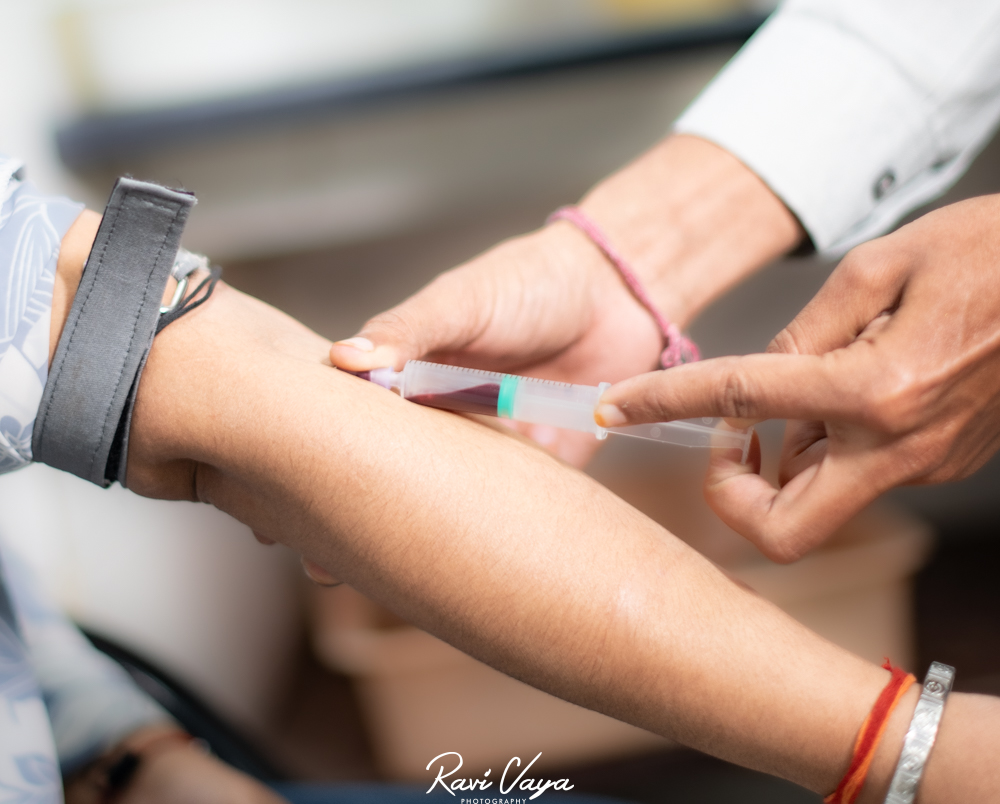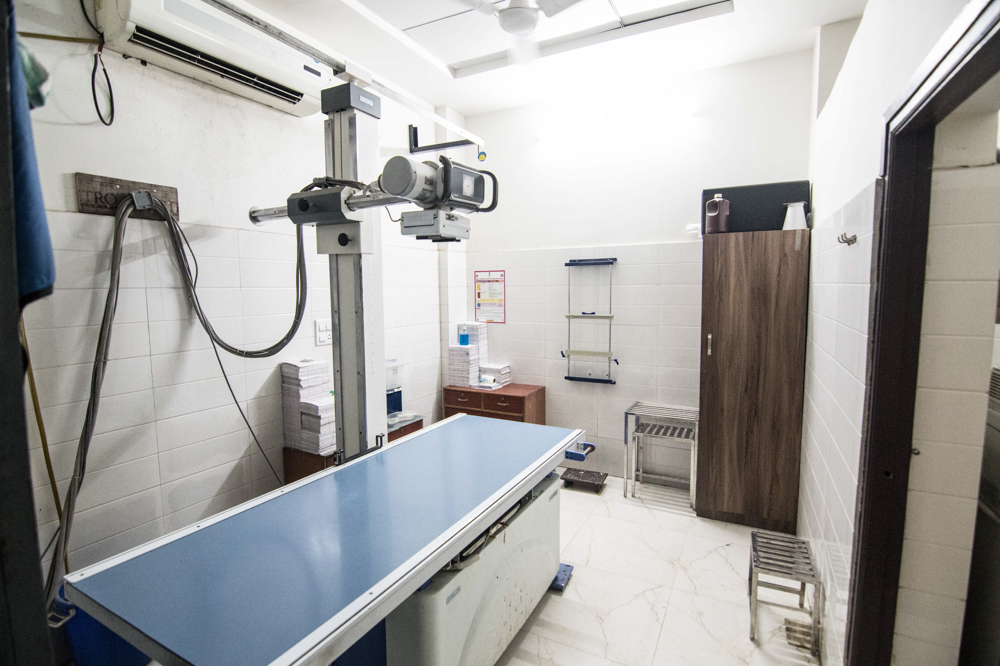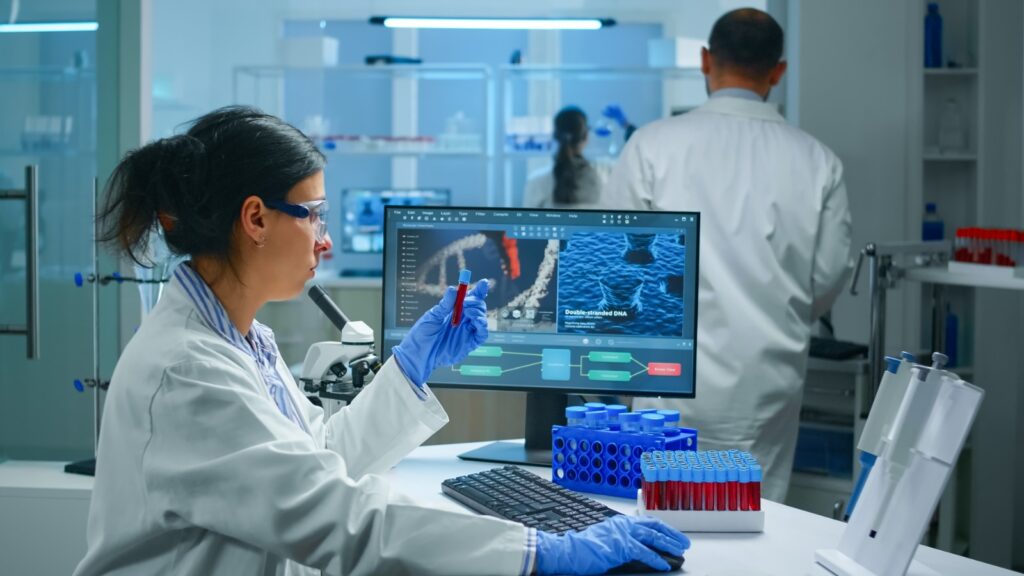In the realm of modern medical diagnostics, Fine-Needle Aspiration Cytology (FNAC) has emerged as a crucial tool in the early detection and diagnosis of various diseases. This minimally invasive procedure has revolutionized the way healthcare professionals approach tissue sampling, offering a quick, relatively painless, and highly effective method for examining cells from suspicious lumps or masses. As we delve into the intricacies of FNAC, we’ll explore its significance, process, and the role it plays in contemporary healthcare, particularly in the context of diagnostic services offered in Kota, Rajasthan.
Understanding FNAC: A Closer Look
Fine-Needle Aspiration Cytology, commonly known as FNAC, is a diagnostic procedure that involves using a thin, hollow needle to extract cells from a suspicious area in the body. This technique is primarily used to investigate lumps or masses that can be felt through the skin or identified through imaging studies. FNAC falls under the broader category of biopsy procedures, which are essential for confirming or ruling out various medical conditions, including cancer.
The Significance of FNAC in Modern Diagnostics
FNAC has gained prominence in the medical community for several compelling reasons:
- Minimally Invasive: Unlike traditional surgical biopsies, FNAC requires no incisions, reducing the risk of complications and scarring.
- Quick and Efficient: The procedure is typically performed on an outpatient basis and takes only a few minutes to complete.
- Cost-Effective: FNAC is generally less expensive than surgical biopsies, making it a more accessible option for many patients.
- Versatility: It can be used to sample various types of tissues and organs, including the thyroid, breast, lymph nodes, and salivary glands.
- Rapid Results: In many cases, preliminary results can be available within hours, allowing for quicker medical decision-making.
- Reduced Anxiety: The simplicity and speed of the procedure can help alleviate patient anxiety associated with more invasive diagnostic methods.
The FNAC Procedure: Step by Step
Understanding the FNAC process can help patients feel more at ease when undergoing this procedure. Here’s a detailed look at what typically happens during an FNAC:
- Preparation
- The patient is positioned comfortably, and the area to be sampled is cleaned.
- Local anesthesia may be administered, although it’s often unnecessary due to the fine nature of the needle used.
- Needle Insertion
- A thin needle, usually 22-25 gauge, is carefully inserted into the target area.
- The insertion is often guided by ultrasound or CT imaging for precise placement.
- Sample Collection
- The needle is moved back and forth within the mass while suction is applied.
- This action draws cells and small tissue fragments into the needle.
- Sample Extraction
- The needle is withdrawn, and the collected material is expelled onto glass slides.
- Sample Preparation
- The samples are immediately smeared on slides and fixed or air-dried.
- Some samples may be placed in a preservative solution for further testing.
- Microscopic Examination
- A cytopathologist examines the prepared slides under a microscope.
- In some cases, rapid on-site evaluation (ROSE) can provide preliminary results within minutes.
- Final Analysis and Reporting
- A comprehensive analysis is performed, and a detailed report is prepared.
- Results are typically available within a few days, depending on the complexity of the case.
FNAC vs. Other Biopsy Methods
While FNAC is a powerful diagnostic tool, it’s essential to understand how it compares to other biopsy methods:
- Core Needle Biopsy
- Uses a larger needle to extract a small cylinder of tissue
- Provides more tissue for analysis but is slightly more invasive than FNAC
- Surgical Biopsy
- Involves removing part or all of a suspicious mass surgically
- More invasive but provides the most comprehensive sample
- Punch Biopsy
- Uses a circular blade to remove a small disk of skin
- Primarily used for skin lesions
Each method has its advantages, and the choice depends on factors such as the location of the mass, the suspected condition, and the patient’s overall health.
FNAC in Cancer Diagnosis and Management
FNAC plays a crucial role in the diagnosis and management of various cancers:
- Initial Diagnosis: It can help distinguish between benign and malignant lesions.
- Staging: FNAC of lymph nodes can assist in determining the extent of cancer spread.
- Monitoring Treatment: It can be used to assess the response to cancer treatments.
- Recurrence Detection: FNAC can help identify cancer recurrence in follow-up care.
Beyond Cancer: Other Applications of FNAC
While cancer diagnosis is a primary application, FNAC is valuable in diagnosing various other conditions:
- Thyroid Disorders: Evaluating thyroid nodules for potential malignancy or functional abnormalities.
- Infectious Diseases: Identifying infectious agents in lymph nodes or abscesses.
- Salivary Gland Disorders: Diagnosing tumors and inflammatory conditions of the salivary glands.
- Breast Lesions: Investigating suspicious lumps in the breast, complementing mammography and ultrasound.
- Lung Diseases: Sampling lung masses or enlarged lymph nodes in the chest.
Drainage Procedures: A Close Cousin of FNAC
In addition to diagnostic sampling, fine-needle techniques are also used for therapeutic drainage procedures. These procedures, often guided by imaging, are used to:
- Drain Fluid Collections: Such as abscesses, cysts, or pleural effusions.
- Relieve Symptoms: Reducing pressure caused by fluid accumulation.
- Obtain Samples for Analysis: The drained fluid can be sent for further testing.
- Guide Treatment: Drainage can be both diagnostic and therapeutic in many cases.
The Role of Diagnostic Centers in FNAC and Biopsy Services
A diagnostic center in Kota plays a crucial role in providing FNAC and other biopsy services to the local community. These centers serve as a bridge between patients and specialized diagnostic procedures, offering several advantages:
- Accessibility: Bringing advanced diagnostic techniques closer to patients, reducing the need for travel to larger cities.
- Expertise: Housing skilled professionals trained in performing and interpreting FNAC and other biopsy procedures.
- State-of-the-Art Equipment: Providing access to high-quality imaging and laboratory equipment necessary for accurate diagnoses.
- Comprehensive Care: Offering a range of diagnostic services under one roof, from initial consultations to follow-up care.
- Cost-Effectiveness: Often providing more affordable options compared to larger hospital settings.
Choosing the Right Diagnostic Center for FNAC
When selecting a diagnostic point Kota for FNAC or other biopsy procedures, consider the following factors:
- Accreditation and Certifications: Ensure the center meets national quality standards.
- Experienced Staff: Look for centers with qualified pathologists and technicians experienced in FNAC.
- Modern Equipment: State-of-the-art imaging and laboratory equipment are crucial for accurate results.
- Turnaround Time: Consider centers that offer timely results without compromising on quality.
- Patient Care: Choose a center that prioritizes patient comfort and provides clear communication throughout the process.
- Range of Services: A center offering a comprehensive range of diagnostic services can provide more integrated care.
The Future of FNAC and Biopsy Techniques
As medical technology advances, the field of cytology and biopsy is evolving. Some emerging trends include:
- Liquid Biopsy: Using blood samples to detect circulating tumor cells or DNA.
- Molecular Testing: Incorporating genetic and molecular analysis into FNAC samples for more precise diagnoses.
- AI-Assisted Diagnosis: Using artificial intelligence to enhance the accuracy of cytological interpretations.
- Improved Imaging Guidance: Advancements in real-time imaging for more precise needle placement.
- Telemedicine Integration: Allowing remote consultations and second opinions on FNAC results.
Challenges in FNAC and Solutions
While FNAC is a valuable diagnostic tool, it faces certain challenges:
- Sample Adequacy Solution: Implement rapid on-site evaluation (ROSE) to ensure sufficient sample collection
- Skill-Dependent Results Solution: Invest in ongoing training and quality assurance programs for staff
- Limited Tissue Architecture Information Solution: Combine FNAC with core needle biopsy when necessary for comprehensive analysis
- Patient Anxiety Solution: Provide detailed patient education and create a comfortable, reassuring environment
- Misdiagnosis Risks Solution: Implement double-reading protocols and seek second opinions for complex cases
Conclusion
Fine-Needle Aspiration Cytology (FNAC) represents a significant advancement in minimally invasive diagnostic techniques. Its ability to provide quick, accurate results with minimal patient discomfort has made it an indispensable tool in modern healthcare. For residents of Kota and surrounding areas, having access to high-quality FNAC services through a local Kota diagnostic center is invaluable for early disease detection and management.
As medical technology continues to evolve, the integration of FNAC with advanced molecular techniques and imaging technologies promises even greater precision in diagnosing a wide range of conditions. By choosing a reputable Diagnostic Centre in Kota that offers FNAC and other advanced biopsy services, patients can ensure they receive the highest standard of care in their diagnostic journey.
FAQs about FNAC Services at Dr. Vaya’s Lab, Kota
Q1: Is the FNAC procedure painful?
A: At Dr. Vaya’s Lab, we prioritize patient comfort. The FNAC procedure is generally well-tolerated and causes minimal discomfort. Our skilled professionals use ultra-fine needles and, if needed, local anesthesia to ensure a nearly pain-free experience.
Q2: How long does it take to get FNAC results from Dr. Vaya’s Lab?
A: We understand the importance of timely results. While preliminary results may be available within hours, comprehensive reports are typically ready within 2-3 working days. For urgent cases, we offer expedited reporting services.
Q3: Can Dr. Vaya’s Lab perform FNAC on any part of the body?
A: Our experts are trained to perform FNAC on various body parts, including the thyroid, breast, lymph nodes, and soft tissue masses. We also offer image-guided FNAC for deeper or less accessible lesions.
Q4: What should I do to prepare for an FNAC procedure at Dr. Vaya’s Lab?
A: Generally, no special preparation is required for FNAC. However, we recommend informing us about any medications you’re taking, especially blood thinners. Our team will provide specific instructions based on the area being sampled.
Q5: Does Dr. Vaya’s Lab offer other types of biopsies besides FNAC?
A: Yes, we offer a comprehensive range of biopsy services, including core needle biopsies and image-guided biopsies. Our pathologists work closely with clinicians to determine the most appropriate biopsy method for each patient’s specific needs.
Your health deserves the most accurate and timely diagnosis possible. At Dr. Vaya’s Lab in Kota, we bring you state-of-the-art FNAC and biopsy services, combining advanced technology with expert care. Don’t let uncertainty about your health linger – take the first step towards clarity and peace of mind today.
Visit Dr. Vaya’s Lab for comprehensive diagnostic services, including FNAC, biopsies, and a wide range of laboratory tests. Our team of experienced pathologists and technicians is dedicated to providing you with accurate results and compassionate care. Whether you’re dealing with a suspicious lump or need routine health screening, we’re here to guide you through every step of the diagnostic process.
Book your appointment now and experience the difference that cutting-edge diagnostics can make in your healthcare journey. At Dr. Vaya’s Lab, we’re not just diagnosing conditions – we’re empowering you with knowledge for better health. Contact us today to schedule your visit and take control of your health with confidence!




